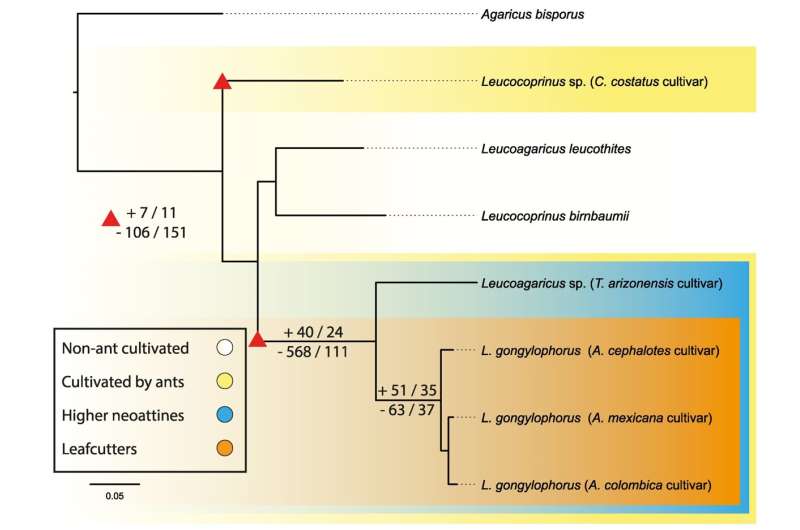While humans domesticated food crops around 10,000 years ago, a lineage of ants called the “attines” became fungus farmers 60 million years earlier. This study reveals the remarkable evolutionary success of fungus-farming ants and has broader implications for understanding how natural selection can drive the domestication of crops. Fungus and ants have a mutually dependent relationship, with the ants cultivating their fungal crop, which in turn provides a stable food supply.

Cultivar of Fungal Domestication by Leafcutter Ants
While this suggests a high degree of thermal tolerance within the attine communities, it has been shown that among the roughly 230 species of leafcutter ants, some are more tolerant than others and have coped with climate change over perhaps 15 million years. Now, they are the top herbivores—and in many cases crop pests—across a range of habitats from Argentina to northern Texas. Researchers have long pondered how these ants came to be the first farmers, with agriculture that evolved without the benefits of culture and technology that enable human farming systems.
Just as modern supermarket corn cobs differ from the small, inedible seeds produced by its wild ancestor (an unassuming grass), fungal crop of leafcutter ants is passed from generation to generation like our human crops and shows signatures of domestication. One example are nutritional rewards (swollen structures rich in nutrients) produced by the leafcutter ant fungus which have no parallel in the rest of the fungal kingdom.
Cracking the Genetic Code of Domesticated Fungi
Now, a study published in Molecular Biology and Evolution has unveiled the crucial genomic changes driving domestication of ant fungus. Led by Assistant Professor Caio Leal-Dutra from the University of Copenhagen and the Smithsonian Tropical Research Institute, this research utilized modern genome sequencing approaches to decode genetic blueprints that make up Leucoagaricus gongylophorus, one of the species of fungus farmed by leafcutter ants.
Using this approach, the researchers were able to examine which parts of the fungal genome changed from living independently 50 million years ago to in ant colonies to 10 million years ago. The researchers found new gene groups involved in the antifungal protection and coadaptation with ants, some of which are probably related to the stability and performance of their agricultural systems over a range of habitats.
Observations for Agribusiness Sustainability
The work on leafcutter ant farming systems, in addition to underscoring the remarkable evolutionary prowess of these fungi, serves as a model system for addressing how natural selection can propel crop domestication. Studying the genomic adaptations of these fungi can also provide insight into how agricultural systems may adapt due to ecological interactions, rather than through human selection.
The long-term resilience seen in ant-farming systems “might provide a new lens for thinking about sustainable agriculture generally,” says senior author Jonathan Shik. We’re not at the point where we can transfer ant-farming technology to human agriculture, but by learning about these systems we can better understand how changes in our genes could help farmers maintain a certain level of yield and stability in their environment. As the world scenario in modern agriculture is an ongoing challenge for humans, especially climate change and resilient crops, the evolutionary solutions shown in this study might be interesting for future studies in agricultural please sciences.
